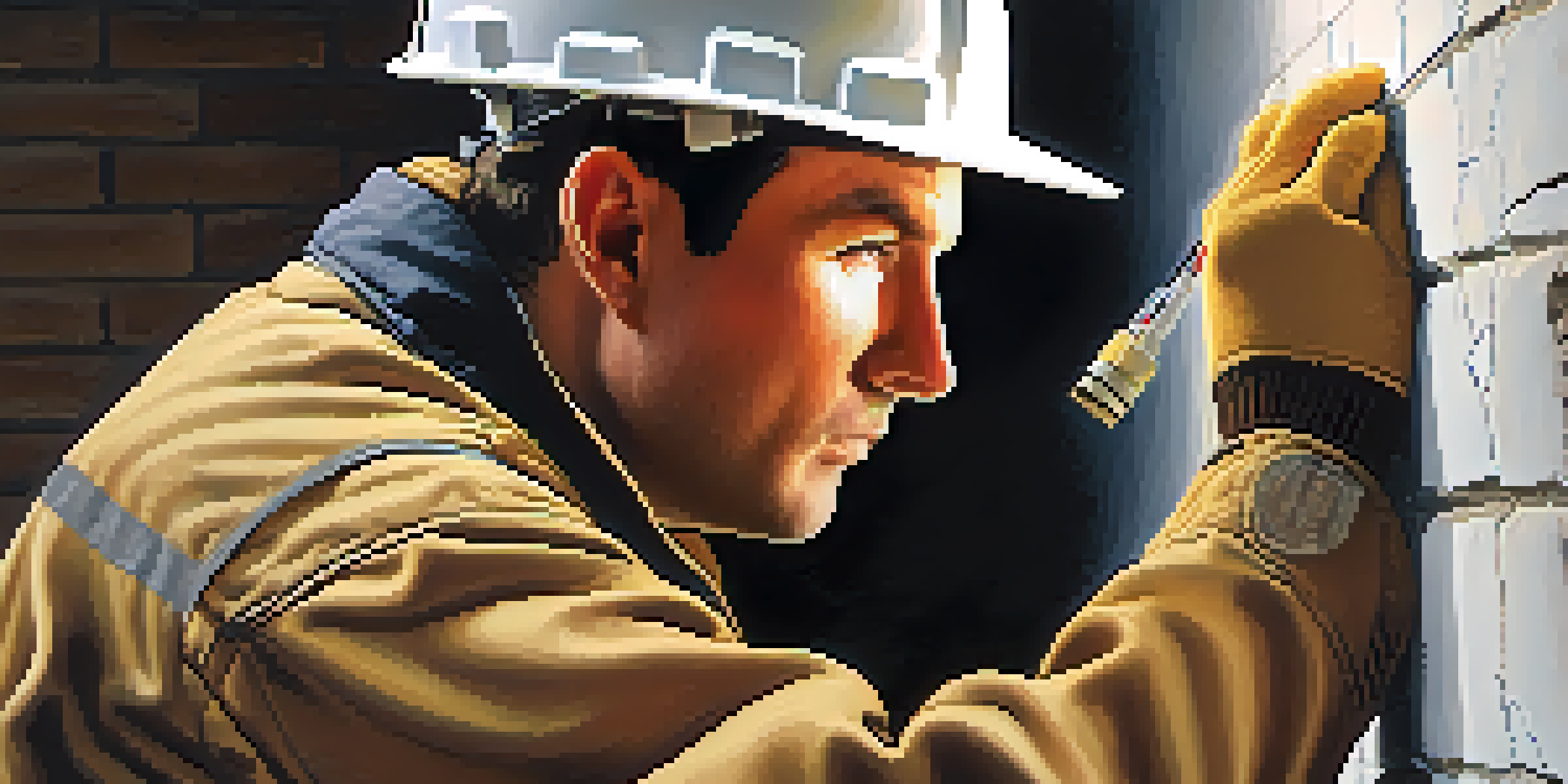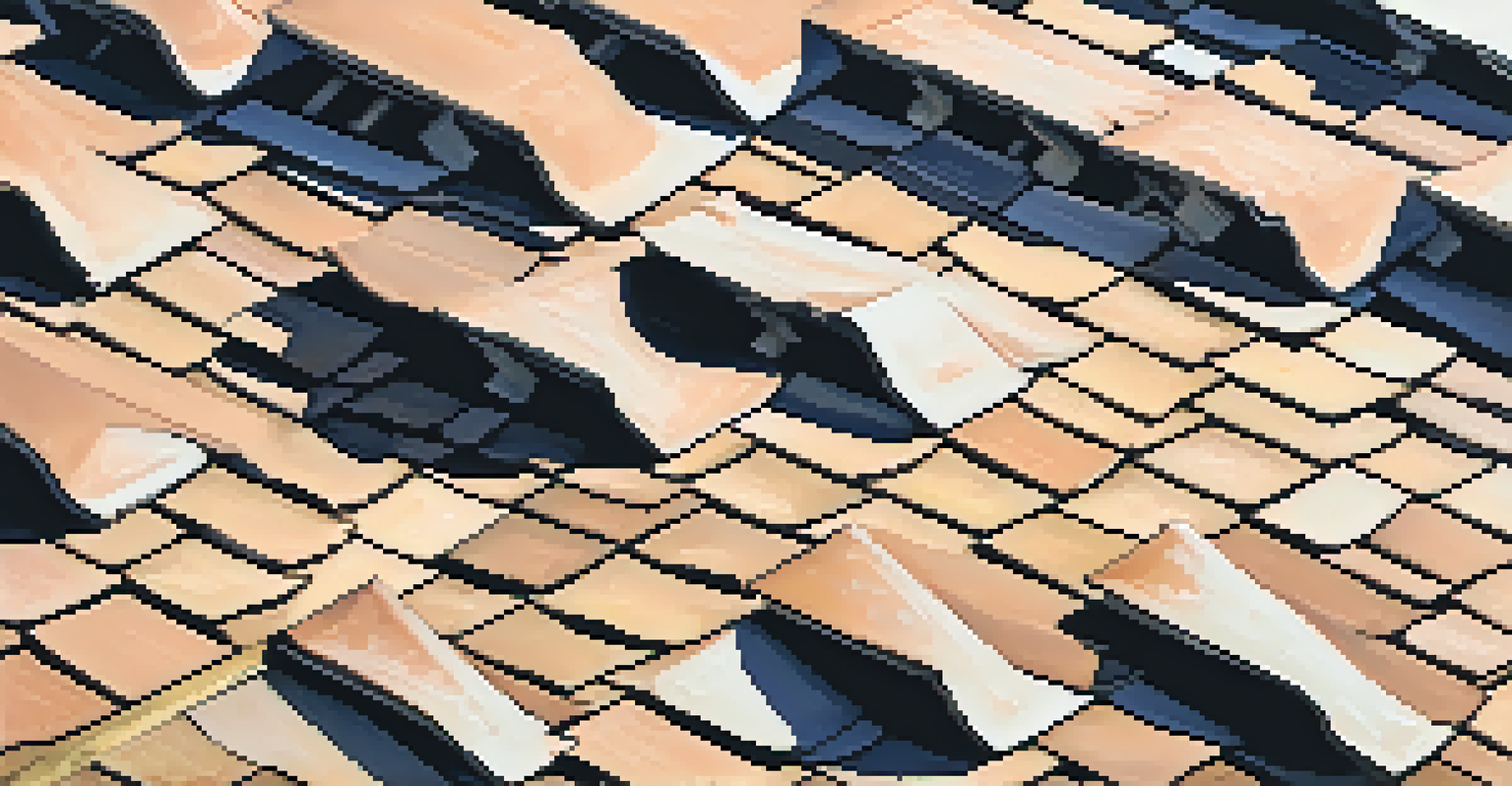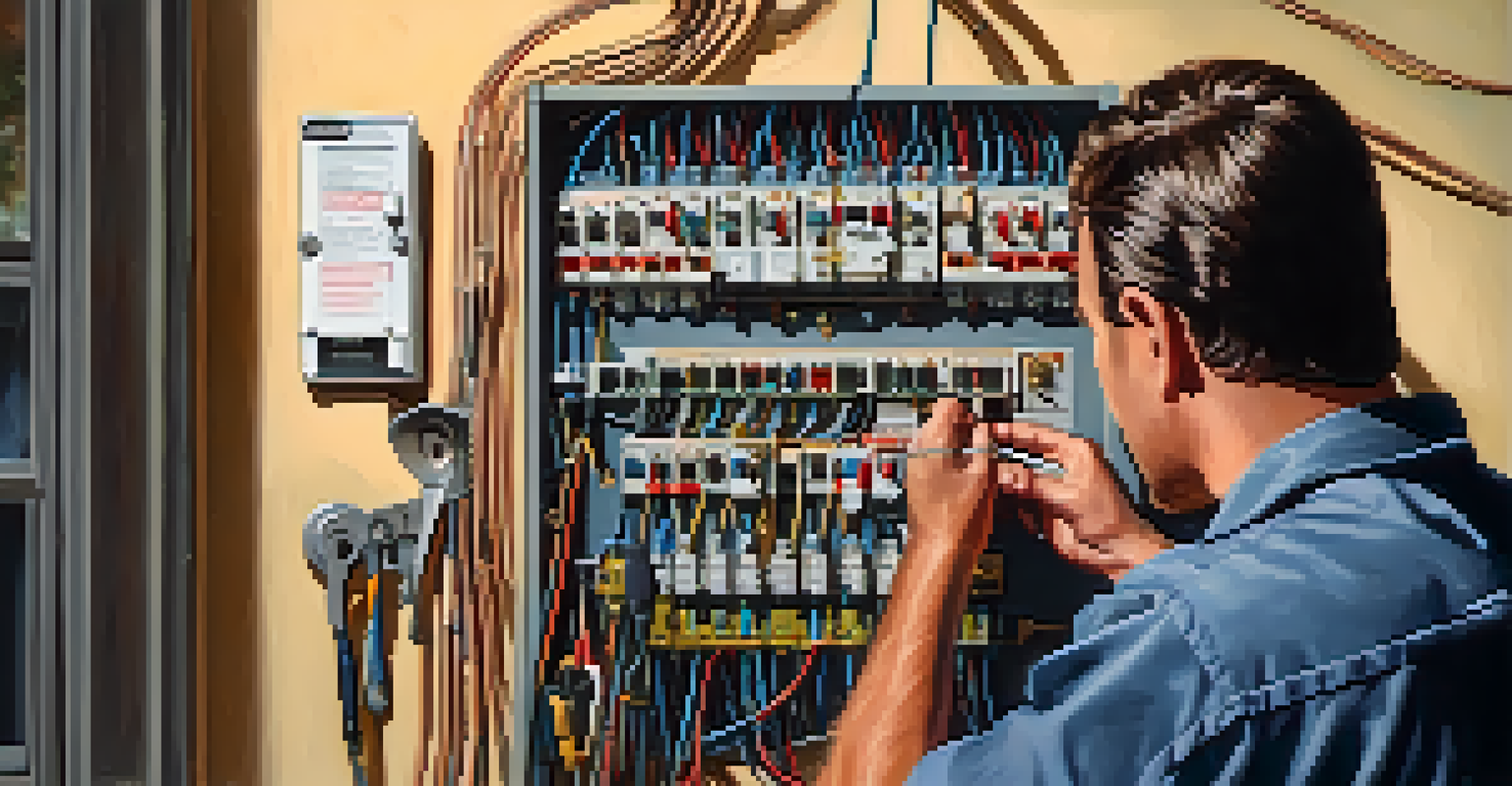Red Flags Home Inspectors Look for During Inspections

Structural Issues: Cracks and Settling
One of the first things home inspectors look for are structural issues, particularly cracks in the walls or foundation. These cracks can indicate serious settling problems, which might compromise the entire structure of the home. It's like seeing a small crack in a dam; it could be harmless, but it might also signal something much worse lurking beneath the surface.
An ounce of prevention is worth a pound of cure.
Inspectors assess the size and location of these cracks to determine their significance. Horizontal cracks, for instance, are often more concerning than vertical ones, pointing to potential foundation failure. If you notice such cracks, it's wise to have a specialist take a closer look, as ignoring them could lead to expensive repairs down the line.
Additionally, inspectors will check for signs of bowing walls or misaligned door frames, which can indicate shifting and instability. In many cases, early detection can lead to more straightforward remedies, saving homeowners from those dreaded renovation nightmares.
Roof Condition: Missing Shingles and Leaks
The roof is another critical area of focus during a home inspection. Missing shingles or signs of wear can be red flags that the roof is nearing the end of its lifespan. Just like a hat protects your head from the elements, a good roof safeguards your home from rain and snow. If the roof isn’t up to snuff, it could lead to water damage and costly repairs.

Inspectors will also examine the attic for signs of leaks, such as water stains or mold growth. These issues can often be traced back to roofing problems, and catching them early can prevent more extensive damage to the home. After all, no one wants to discover a leaky roof during a heavy rainstorm!
Structural Issues Can Be Costly
Cracks in walls or foundations may indicate serious structural problems that could lead to expensive repairs if ignored.
Finally, the type of roofing material also plays a role; some materials have longer lifespans than others. An inspector will provide insight into the condition and age of the roof, helping potential buyers make informed decisions.
Electrical Systems: Outdated Wiring and Hazards
Electrical systems are another area where inspectors look for red flags. Outdated wiring can pose significant safety risks, increasing the chance of electrical fires. Imagine living in a home with a faulty wiring system; it’s like playing with fire, quite literally!
The bitter taste of poor quality remains long after the sweet taste of low price is forgotten.
Inspectors will check for signs of improper wiring, such as exposed wires or overloaded circuits. They may also look for old fuse boxes that need replacement. If they find any issues, they’ll recommend a licensed electrician to evaluate and rectify the problems, ensuring your home remains safe.
Additionally, the presence of too many extension cords or power strips can indicate that the electrical system is inadequate for the home's needs. This can lead to a higher risk of fire, making it a crucial point for prospective buyers to consider.
Plumbing Problems: Leaks and Water Pressure Issues
Plumbing issues can be a homeowner’s worst nightmare. Inspectors pay close attention to leaks under sinks and around toilets, as these can lead to water damage and mold growth. Just like a small leak in a garden hose can turn into a big mess, minor plumbing problems can escalate quickly if left unaddressed.
They also test water pressure and check for signs of rusty pipes, which can indicate corrosion and possible failures in the future. Home inspectors will often look for signs of past repairs as well, which could hint at ongoing issues. A history of plumbing problems can be a significant red flag for potential buyers.
Roof Condition Affects Home Value
Missing shingles or leaks can compromise a roof's integrity, leading to potential water damage and increased repair costs.
Moreover, inspectors assess the location of plumbing fixtures and their accessibility for future repairs. Understanding the plumbing system's condition helps buyers make informed choices about their potential investment.
HVAC Systems: Age and Inefficiency
Heating, ventilation, and air conditioning (HVAC) systems are vital for home comfort, and their condition can raise red flags during inspections. Inspectors will check the age of the system, as older models may not function efficiently or could be nearing the end of their lifespan. Think of it like an old car; it may still run, but you can’t expect it to be reliable for long.
They also look for signs of neglect, such as dirty filters or unmaintained ductwork, which can lead to poor air quality and higher energy bills. A well-maintained HVAC system not only enhances comfort but also saves money in the long run.
Finally, inspectors may recommend servicing the system if it shows signs of inefficiency. This proactive approach helps ensure that homeowners aren’t faced with sudden breakdowns, especially during extreme weather conditions.
Pest Infestations: Termites and Rodents
Pests can cause significant damage to a home, making them a major concern for inspectors. Termites, for instance, are often referred to as 'silent destroyers' because they can damage wood structures without immediate signs. Just like a hidden leak, a termite problem can go unnoticed until it's too late, leading to costly repairs.
Inspectors will look for signs of pest infestations, such as droppings, nests, or visible damage to wood. They might also check for areas where pests can enter, like cracks or holes in the foundation. Even if you don’t see pests, a thorough inspection can reveal potential entry points that need sealing.
Safety Hazards Need Immediate Attention
Detection of carbon monoxide and radon during inspections is crucial, as these silent threats pose serious health risks.
If an infestation is found, it’s essential to call in pest control experts to address the issue promptly. By tackling these problems early, homeowners can protect their investments and maintain a healthy living environment.
Safety Hazards: Carbon Monoxide and Radon
Safety hazards, such as carbon monoxide and radon, are crucial concerns during home inspections. Carbon monoxide is a colorless, odorless gas that can be deadly, often produced by faulty heating systems or appliances. Inspectors will check for the presence of functioning detectors to ensure that residents are protected from this silent threat.
Radon, on the other hand, is a naturally occurring gas that can seep into homes from the ground. High levels of radon exposure are linked to lung cancer, making it essential for inspectors to test for its presence. Think of these safety checks as a life jacket; they provide protection and peace of mind.

If any hazards are detected, inspectors will recommend mitigation strategies. Addressing these safety concerns promptly not only protects residents but also enhances the overall value of the home.
Final Thoughts: Importance of Home Inspections
In conclusion, home inspections play a vital role in identifying potential issues before finalizing a purchase. They provide an opportunity for buyers to understand the true condition of a property, ensuring they aren’t blindsided after closing. Think of it as getting a health check-up for your future home; it’s better to know what’s wrong now than to face surprises later.
By being aware of common red flags, prospective buyers can make informed decisions and avoid costly repairs in the future. Home inspections can reveal everything from structural issues to safety hazards, empowering buyers to negotiate repairs or price adjustments.
Ultimately, investing in a thorough home inspection is an investment in peace of mind. By addressing these red flags, you’re not just buying a house; you’re securing a safe and comfortable home for years to come.